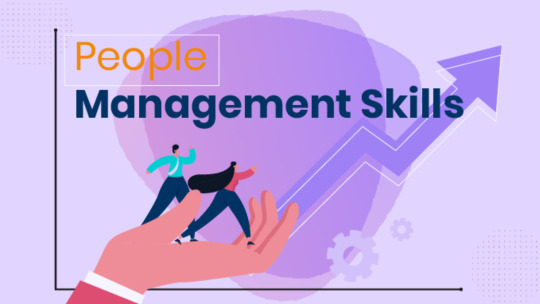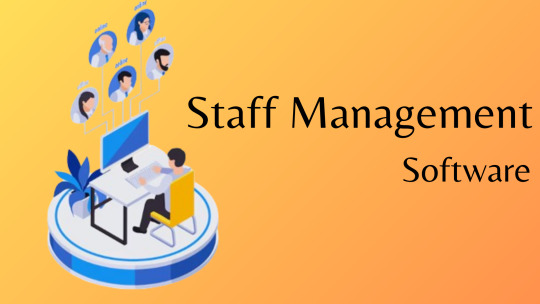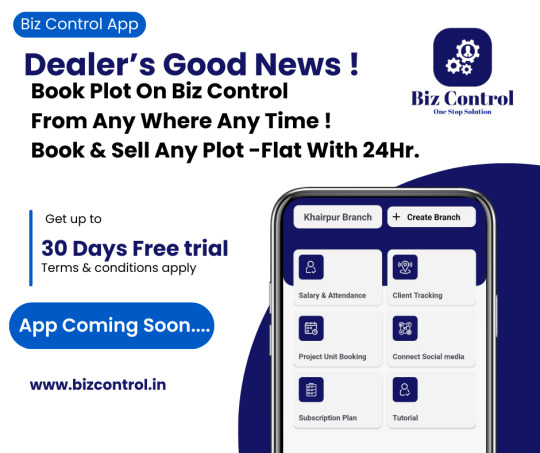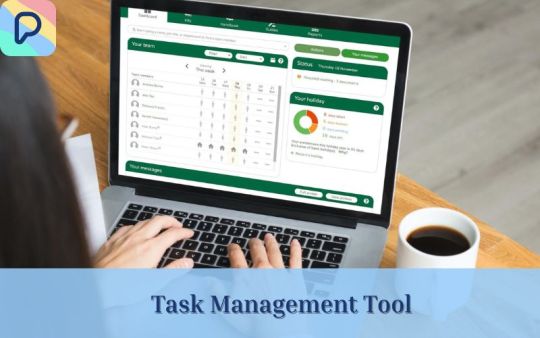#Employee Management Tools
Explore tagged Tumblr posts
Text
Business Software Suite - TechForing Growth
TechForing Growth delivers a comprehensive business software suite that combines essential tools for small businesses. From managing projects and automating HR tasks to tracking performance and streamlining communication, this platform covers it all. Its intuitive interface and seamless integrations ensure smooth workflows, allowing businesses to focus on growth while staying organized and efficient.

#finance software#hr software#tax software#Best Business Management Software#Business Software Suite#Hr Automation Software#Employee Management Tools
0 notes
Text
The Evolution of HR Technology: A Look at Modern HRMS
The landscape of human resource management has undergone a significant transformation over the years. From manual processes and paper records to sophisticated Human Resource Management Systems (HRMS), technology has revolutionized the way HR functions. Here's a look at how HR technology has evolved and why modern HRMS solutions are game-changers for businesses.
The Early Days of HR Technology
Initially, HR tasks were heavily dependent on manual processes. Payroll calculations, employee records, and recruitment were managed through spreadsheets and paper files. While this approach worked, it was time-consuming, prone to errors, and inefficient for scaling businesses.
The Rise of HR Software Solutions
In the 1990s, the introduction of basic HR software paved the way for automation in payroll, attendance tracking, and record-keeping. These systems significantly reduced administrative workload but were often standalone solutions, lacking integration and advanced functionality.
Modern HRMS: An All-in-One Solution
Today, HRMS represents a holistic approach to human resource management, combining multiple functionalities into a unified platform. These systems are designed to streamline and automate complex HR tasks, improve efficiency, and enhance the employee experience.
Key Features of Modern HRMS
Employee Data Management: Centralized storage of employee information for easy access and updates.
Payroll and Benefits Administration: Automation of salary processing, tax calculations, and benefits management.
Recruitment and Onboarding: Tools for posting job ads, tracking candidates, and onboarding new hires seamlessly.
Performance Management: Advanced analytics for tracking employee performance and setting development goals.
Employee Self-Service Portals: Empowering employees to manage their own leave, attendance, and personal details.
Compliance Tracking: Ensuring adherence to labor laws and regulations with minimal manual effort.
Integration with Other Tools: Compatibility with third-party applications for enhanced functionality.
Benefits of Modern HRMS
Efficiency and Productivity: Automation reduces repetitive tasks, freeing up HR professionals for strategic planning.
Data-Driven Decision Making: Advanced analytics provide insights into workforce trends and performance metrics.
Improved Employee Engagement: Self-service features and streamlined processes enhance employee satisfaction.
Scalability: Modern HRMS platforms are designed to grow with the organization, making them ideal for businesses of all sizes.
Future Trends in HR Technology
As technology continues to evolve, HRMS is expected to integrate more advanced features, such as:
Artificial Intelligence (AI): Predictive analytics for hiring, retention, and employee development.
Mobile-First Solutions: Ensuring accessibility on the go.
Enhanced Employee Wellness Tools: Integrating mental health and wellness tracking into HR systems.
Conclusion
The evolution of HR technology from manual processes to modern HRMS has been a transformative journey. Today’s HRMS solutions empower organizations to manage their workforce efficiently while fostering a better workplace environment. Investing in the right HRMS is not just a technological upgrade—it’s a strategic move towards building a smarter and more agile organization.
More info: https://ahalts.com/solutions/hr-services

#HR technology#HRMS evolution#Modern HR systems#HR automation#Workforce management#Employee management tools#HR software trends#Human resource innovation#Payroll automation#HR analytics#HR compliance#Recruitment technology#Employee engagement#HRIS vs. HRMS
0 notes
Text
Elevate Your Hr Strategy With Advanced People Management Skills

The role of HR professionals has evolved significantly in today's fast-paced and competitive business environment. Beyond traditional administrative tasks, HR departments are now expected to play a strategic role in managing and developing an organization's most valuable asset - its people. To excel in this role, HR professionals need to possess advanced people management skills that go beyond basic HR functions.
Understanding the Skills of a Good Manager
At the core of effective people management lies the skills of a good manager. These skills include effective communication, conflict resolution, decision-making, and leadership. A good manager is someone who can inspire and motivate employees, resolve conflicts, and make informed decisions that benefit both the organization and its employees.
Enhancing Your Management Skills
To improve your management skills, consider investing in workforce management software and employee management tools. These tools can help you streamline HR processes, track employee performance, and identify areas for improvement. Additionally, consider enrolling in management training programs or workshops to enhance your skills further.
The Role of Workforce Management Software
Workforce management software plays a crucial role in modern HR strategy. This software helps HR professionals manage employee schedules, track attendance, and monitor performance. By leveraging workforce management software, HR professionals can streamline HR processes, improve efficiency, and enhance employee satisfaction.
Strategies to Improve Your Management Skills

To improve your management skills, consider the following strategies:
Effective Communication: Communication is key to effective people management. Practice active listening, provide constructive feedback, and communicate clearly and concisely.
Conflict Resolution: Develop skills in conflict resolution by understanding different perspectives, remaining neutral, and finding mutually beneficial solutions.
Decision-Making: Improve your decision-making skills by gathering relevant information, considering all options, and evaluating the potential outcomes.
Leadership: Develop your leadership skills by leading by example, inspiring others, and fostering a positive work environment.
Adopting a Strategic Approach to HR
To truly elevate your HR strategy, it's essential to adopt a strategic approach to HR. It means aligning HR goals with overall business objectives and focusing on long-term planning. By taking a strategic approach, HR professionals can ensure that their efforts contribute directly to the organization's success.
Leveraging Employee Management Tools
In addition to workforce management software, consider leveraging employee management tools to enhance your HR strategy. These tools can help you track employee performance, manage benefits and payroll, and improve employee engagement. By using these tools effectively, HR professionals can streamline HR processes and improve overall efficiency.
Embracing Continuous Learning and Development
To stay ahead in the rapidly evolving business landscape, HR professionals must embrace continuous learning and development. Attend workshops, seminars, and conferences to stay updated with the latest trends and best practices in HR management. Additionally, consider pursuing certifications in HR management to enhance your skills and credibility.
Cultivating Emotional Intelligence
Emotional intelligence (EI) is another crucial skill for HR professionals. EI enables you to understand and manage your emotions effectively, as well as understand and influence the emotions of others. By cultivating EI, HR professionals can improve their ability to communicate, resolve conflicts, and build strong relationships with employees.
Implementing Feedback Mechanisms

Feedback is essential for growth and improvement. Implementing feedback mechanisms within your organization can help you gather valuable insights from employees and stakeholders. Use this feedback to identify areas for improvement and make informed decisions that benefit both employees and the organization.
Leveraging Technology for HR Innovation
Technology plays a pivotal role in modern HR management. Embrace technology trends such as software usage tracking, artificial intelligence (AI), data analytics, and automation to streamline HR processes and enhance decision-making. By leveraging technology, HR professionals can improve efficiency, reduce costs, and drive innovation within their organizations.
Fostering a Culture of Diversity and Inclusion
Diversity and inclusion are not just buzzwords; they are crucial components of a successful HR strategy. HR professionals should strive to create a workplace culture that values and celebrates diversity in all its forms. It includes promoting equal opportunities for all employees, regardless of their background, and actively seeking out diverse perspectives in decision-making processes.
Developing Coaching and Mentoring Skills
Mentoring and coaching are effective strategies for staff development. HR professionals can enhance their HR strategy by developing coaching and mentoring skills. It involves providing guidance, support, and feedback to employees to help them achieve their full potential. By investing in coaching and mentoring programs, HR professionals can foster a culture of continuous learning and development within their organizations.
Conclusion
Advanced people management skills are essential for HR professionals looking to elevate their HR strategy. By investing in workforce management software, improving management skills, and adopting a strategic approach to HR, HR professionals can enhance their effectiveness and drive organizational success.
#People management skills#Workforce management software#Employee management tools#Skills of a good manager#How to improve management skills
0 notes
Text
Elevate Your Hr Strategy With Advanced People Management Skills

The role of HR professionals has evolved significantly in today's fast-paced and competitive business environment. Beyond traditional administrative tasks, HR departments are now expected to play a strategic role in managing and developing an organization's most valuable asset - its people. To excel in this role, HR professionals need to possess advanced people management skills that go beyond basic HR functions.
Understanding the Skills of a Good Manager
At the core of effective people management lies the skills of a good manager. These skills include effective communication, conflict resolution, decision-making, and leadership. A good manager is someone who can inspire and motivate employees, resolve conflicts, and make informed decisions that benefit both the organization and its employees.
Enhancing Your Management Skills
To improve your management skills, consider investing in workforce management software and employee management tools. These tools can help you streamline HR processes, track employee performance, and identify areas for improvement. Additionally, consider enrolling in management training programs or workshops to enhance your skills further.
The Role of Workforce Management Software
Workforce management software plays a crucial role in modern HR strategy. This software helps HR professionals manage employee schedules, track attendance, and monitor performance. By leveraging workforce management software, HR professionals can streamline HR processes, improve efficiency, and enhance employee satisfaction.
Strategies to Improve Your Management Skills

To improve your management skills, consider the following strategies:
Effective Communication: Communication is key to effective people management. Practice active listening, provide constructive feedback, and communicate clearly and concisely.
Conflict Resolution: Develop skills in conflict resolution by understanding different perspectives, remaining neutral, and finding mutually beneficial solutions.
Decision-Making: Improve your decision-making skills by gathering relevant information, considering all options, and evaluating the potential outcomes.
Leadership: Develop your leadership skills by leading by example, inspiring others, and fostering a positive work environment.
Adopting a Strategic Approach to HR
To truly elevate your HR strategy, it's essential to adopt a strategic approach to HR. It means aligning HR goals with overall business objectives and focusing on long-term planning. By taking a strategic approach, HR professionals can ensure that their efforts contribute directly to the organization's success.
Leveraging Employee Management Tools
In addition to workforce management software, consider leveraging employee management tools to enhance your HR strategy. These tools can help you track employee performance, manage benefits and payroll, and improve employee engagement. By using these tools effectively, HR professionals can streamline HR processes and improve overall efficiency.
Embracing Continuous Learning and Development
To stay ahead in the rapidly evolving business landscape, HR professionals must embrace continuous learning and development. Attend workshops, seminars, and conferences to stay updated with the latest trends and best practices in HR management. Additionally, consider pursuing certifications in HR management to enhance your skills and credibility.
Cultivating Emotional Intelligence
Emotional intelligence (EI) is another crucial skill for HR professionals. EI enables you to understand and manage your emotions effectively, as well as understand and influence the emotions of others. By cultivating EI, HR professionals can improve their ability to communicate, resolve conflicts, and build strong relationships with employees.
Implementing Feedback Mechanisms

Feedback is essential for growth and improvement. Implementing feedback mechanisms within your organization can help you gather valuable insights from employees and stakeholders. Use this feedback to identify areas for improvement and make informed decisions that benefit both employees and the organization.
Leveraging Technology for HR Innovation
Technology plays a pivotal role in modern HR management. Embrace technology trends such as software usage tracking, artificial intelligence (AI), data analytics, and automation to streamline HR processes and enhance decision-making. By leveraging technology, HR professionals can improve efficiency, reduce costs, and drive innovation within their organizations.
Fostering a Culture of Diversity and Inclusion
Diversity and inclusion are not just buzzwords; they are crucial components of a successful HR strategy. HR professionals should strive to create a workplace culture that values and celebrates diversity in all its forms. It includes promoting equal opportunities for all employees, regardless of their background, and actively seeking out diverse perspectives in decision-making processes.
Developing Coaching and Mentoring Skills
Mentoring and coaching are effective strategies for staff development. HR professionals can enhance their HR strategy by developing coaching and mentoring skills. It involves providing guidance, support, and feedback to employees to help them achieve their full potential. By investing in coaching and mentoring programs, HR professionals can foster a culture of continuous learning and development within their organizations.
Conclusion
Advanced people management skills are essential for HR professionals looking to elevate their HR strategy. By investing in workforce management software, improving management skills, and adopting a strategic approach to HR, HR professionals can enhance their effectiveness and drive organizational success.
#People management skills#Workforce management software#Employee management tools#Skills of a good manager#How to improve management skills
0 notes
Text
Mastering Workforce Dynamics: Unleashing Staff Management Software Solutions

The efficient management of human capital stands as a fundamental determinant of organizational success. The intricate interplay of workforce dynamics, encompassing the diverse skills, attitudes, and behaviors of employees, profoundly impacts the performance and viability of businesses across industries. As businesses strive to navigate this dynamic environment, the role of staff management software emerges as a critical catalyst for optimizing workforce operations and unlocking untapped potential.
Employees management software, also known as employee management tools or workforce management software, represents a paradigm shift in how organizations approach the complexities of managing their personnel. By harnessing the power of advanced algorithms and intuitive interfaces, these solutions offer a comprehensive suite of functionalities aimed at streamlining administrative tasks, enhancing communication, and improving overall workforce productivity.
At its core, mastering workforce dynamics with employee management software involves recognizing and adapting to the multifaceted challenges posed by today's diverse and dynamic workforce. From scheduling complexities to performance tracking and talent development, these tools provide businesses with the agility and insight needed to stay ahead in a competitive marketplace.
What Is Software For Staff Management?
Software for staff management, also known as employee management software or workforce management software, encompasses a range of digital tools designed to streamline various aspects of managing employees within an organization.
These software solutions typically offer functionalities to assist with tasks such as scheduling, time tracking, performance management, communication, and HR administration. Here are some common types of software for staff management:
Employee Scheduling Software: This type of software helps businesses create and manage employee schedules efficiently. It allows managers to easily assign shifts, track employee availability, handle shift swaps, and ensure adequate staffing coverage. Time and Attendance Software: Time and attendance software automates the process of tracking employee work hours, breaks, and overtime. It can integrate with biometric devices, time clocks, or mobile apps to accurately record employee attendance data.

Performance Management Software: Performance management software facilitates the assessment and tracking of employee performance metrics, goal setting, and performance reviews. It often includes features for feedback collection, performance appraisal, and employee development planning.
HRIS (Human Resources Information System): HRIS software centralizes various HR functions, including employee data management, payroll processing, benefits administration, and compliance tracking. It streamlines administrative tasks and helps HR departments maintain accurate and up-to-date employee records.
Is Employee Management Software Worth It For Business?
Employee management software is worth it for businesses of all sizes and industries. These software solutions offer a wide range of benefits that contribute to operational efficiency, employee productivity, and overall business success. Firstly, employee management software automates many time-consuming administrative tasks, such as scheduling, time tracking, and payroll processing, freeing up valuable time for managers and HR professionals to focus on strategic initiatives. Additionally, these tools improve communication and collaboration among team members, facilitating smoother workflows and reducing the likelihood of misunderstandings or errors.
Furthermore, employee management software provides valuable insights into workforce metrics and trends, enabling businesses to make data-driven decisions related to staffing, performance management, and talent development. By streamlining processes, enhancing communication, and leveraging data analytics, employee management software helps businesses optimize their human resources and drive growth in a competitive marketplace, making it a worthwhile investment for any organization. Also Watch: Leading Employee Engagement and Workforce Productivity Tool
youtube
Epilogue!
In conclusion, staff management software stands as a transformative solution for businesses seeking to optimize their workforce operations and adapt to the dynamic demands of the modern workplace. By leveraging advanced technologies and intuitive interfaces, these software solutions offer a comprehensive suite of functionalities that streamline administrative tasks, enhance communication, and provide valuable insights into workforce dynamics.
From employee scheduling and performance tracking to HR administration and employee engagement, staff management solutions empower organizations to maximize efficiency, boost productivity, and foster a positive work environment.
As businesses continue to navigate the complexities of managing human capital, investing in employee management software emerges as a strategic imperative for driving long-term success and staying ahead in an ever-evolving business landscape. By embracing the potential of employee management tools, businesses can unlock new levels of operational excellence and position themselves for sustained growth and competitiveness in the years to come.
#Staff Management Software#staff management#employee management tools#management software#workforce management software#Youtube
0 notes
Link
#change management#organizational change management#employee engagement#change strategy#change leadership#strategic leadership#change tools#communication planning#change adoption#organizational change#business transformation#change management engagement#changemanagement
2 notes
·
View notes
Text
Streamline Your Workflow with Microsoft 365 Suite Deployment Services in 2025
In today’s fast-paced business environment, achieving efficiency and seamless collaboration is critical to staying ahead. The Microsoft 365 Suite offers a comprehensive range of tools designed to streamline workflows, enhance productivity, and foster better communication. However, to unlock its full potential, businesses need tailored deployment services that align with their specific goals and operational requirements.

Why Microsoft 365 Suite is Essential in 2025
Unified Communication and Collaboration Microsoft Teams, SharePoint, and Outlook provide integrated platforms that support real-time communication, file sharing, and collaboration across teams—whether they’re in the same office or dispersed globally.
Enhanced Productivity with AI and Automation Tools like Microsoft Viva and Power Automate bring AI-driven insights and automation capabilities, enabling businesses to reduce manual tasks and focus on strategic initiatives.
Scalable and Secure Solutions With advanced security features and compliance tools, Microsoft 365 ensures businesses can scale their operations confidently while safeguarding sensitive data.
Flexibility for Hybrid Work Models The suite’s cloud-based architecture empowers employees to work from anywhere, ensuring a seamless transition between remote and on-site operations.
The Importance of Professional Deployment Services
While Microsoft 365 offers robust features, implementing it effectively can be challenging without expert guidance. Professional deployment services are crucial for:
Customised Solutions: Tailoring the suite’s features to your business’s unique needs ensures maximum ROI.
Efficient Migration: Migrating data from legacy systems with minimal disruption requires technical expertise.
Training and Support: Ensuring your teams are equipped to leverage the suite effectively enhances adoption rates.
Ongoing Optimisation: Regular assessments and updates keep your systems aligned with evolving business objectives.
Addressing Modern Business Challenges
Reducing Silos By integrating tools like Teams, OneDrive, and Planner, organisations can eliminate data silos and promote cross-departmental collaboration.
Improving Decision-Making Power BI within Microsoft 365 provides actionable insights through real-time analytics, enabling leaders to make informed decisions swiftly.
Boosting Employee Engagement Features like Viva Insights prioritise employee well-being and productivity, helping organisations retain top talent.
Key Considerations for Microsoft 365 Deployment
Assess Your Business Needs: Understand your current challenges and how Microsoft 365 can address them.
Plan for Change Management: Foster a culture of adaptability to ensure smooth adoption.
Focus on Security: Leverage tools like Microsoft Defender to mitigate cybersecurity risks.
Partner with Experts: Collaborate with experienced providers to ensure a seamless deployment process.
Conclusion
Microsoft 365 Suite is not just a productivity tool; it’s a strategic asset for driving innovation and efficiency in 2025. By partnering with a trusted deployment service provider, businesses can ensure a smooth transition, empowering their teams to achieve more while staying agile in a competitive landscape.
Ready to revolutionise your workflow? Explore how Microsoft 365 Suite deployment can transform your business today.
#Microsoft 365 Suite deployment#Microsoft 365 migration services#Cloud-based collaboration tools#Hybrid work solutions#Microsoft Teams integration#Secure data management#AI-driven business tools#Customised Microsoft 365 implementation#Enhanced business collaboration#Power BI analytics for businesses#Microsoft 365 professional deployment#Data security in Microsoft 365#Employee engagement with Microsoft Viva
0 notes
Text
Employee Succession Planning Software
Bullseye Engagement’s Employee Succession Planning Software offers organizations a strategic tool to ensure the long-term success and stability of their workforce. This comprehensive platform allows businesses to identify, develop, and retain top talent by providing a clear roadmap for future leadership roles. The software helps HR teams assess employee performance, potential, and readiness for advancement, enabling them to proactively plan for key role transitions. By leveraging data-driven insights, Bullseye Engagement’s software enables companies to create customized succession plans aligned with organizational goals. It helps identify critical positions, track high-potential employees, and design targeted development programs to bridge skill gaps. This ensures that businesses are prepared to fill leadership roles quickly and efficiently, minimizing disruptions caused by turnover or retirements. The platform also promotes employee engagement by offering transparency in career progression and development opportunities. Employees can see clear pathways for advancement, motivating them to grow within the organization and contributing to retention. Additionally, Bullseye Engagement’s software supports succession planning for all levels of the organization, from senior leadership to mid-level management. Ultimately, Bullseye Engagement’s Employee Succession Planning Software helps organizations cultivate a robust talent pipeline, reduce leadership gaps, and secure a sustainable future by effectively managing talent and succession strategies.
For more info visit us https://www.bullseyeengagement.com/seo/succession-planning-software.asp
0 notes
Text
Corporate Employee Assessment: Building a Competitive Workforce
In today’s fast-paced business environment, one of the most powerful tools companies can leverage to stay competitive is a robust employee assessment strategy. Effective employee assessments not only optimize individual performance but also drive organizational growth. However, many companies still underestimate the true value of this practice. If you’re looking to transform your workforce and gain a competitive edge, understanding the importance and implementation of Corporate Employee Assessment
is key.

1. The Importance of Employee Assessment
Employee assessment refers to the ongoing evaluation of employees to understand their skills, strengths, and areas for improvement. It is a multifaceted tool that businesses use to boost employee performance, align workforce skills with business goals, and plan for future growth. Without a clear understanding of an employee’s capabilities, businesses run the risk of misaligning resources, stunting individual growth, and missing out on critical opportunities for development.
Why is employee assessment so crucial?
Optimizing Performance: Regular assessments help identify areas where employees excel and where they need support. This insight enables leaders to make informed decisions about promotions, training needs, and team compositions.
Encouraging Growth and Development: By understanding an employee's strengths and weaknesses, managers can provide targeted opportunities for development, ensuring that the workforce grows in alignment with the company’s goals.
Building a Competitive Edge: An ongoing commitment to assessment enables companies to constantly adapt and improve, which is critical for staying competitive in any industry.
2. Types of Corporate Employee Assessments
There’s no one-size-fits-all approach when it comes to employee assessments. The best organizations use a combination of different types of assessments to gain a 360-degree view of their employees.
Performance-Based Assessments Performance-based assessments focus on how well employees meet their established goals, targets, and performance metrics. They might involve:
KPIs (Key Performance Indicators): Measuring outcomes against established goals.
360-Degree Feedback: Gathering insights from peers, managers, and direct reports to evaluate an employee’s overall performance.
This type of assessment is critical for providing actionable insights on how employees contribute to business success.
Skill-Based Assessments To stay competitive, employees must have the right set of skills for the job. Skill-based assessments help to:
Evaluate technical capabilities in areas like software proficiency or industry-specific tools.
Measure soft skills, such as communication, teamwork, and leadership potential. This assessment can be tailored to specific roles or departments, allowing companies to identify gaps and provide targeted skill-building opportunities.
Behavioral and Personality Assessments Understanding an employee's personality and behavior is crucial for ensuring team cohesion and individual performance. Behavioral assessments, such as the DISC or MBTI (Myers-Briggs Type Indicator), give insights into how employees approach problems, communicate, and collaborate. These tools can help businesses:
Build balanced teams by ensuring diversity in personality types.
Improve leadership training by identifying natural leaders or potential managers.
Potential Assessments Potential assessments help businesses identify employees who exhibit the ability to grow within the organization. These assessments are especially valuable for:
Succession planning: Identifying and nurturing future leaders.
Career development: Providing employees with opportunities that align with their long-term potential.
By identifying high-potential employees early on, organizations can ensure a continuous pipeline of capable leaders who can drive the company forward.
3. Key Benefits of Employee Assessment
Employee assessment is not just about evaluating performance—it’s a vital part of a broader strategy for continuous improvement. Here are some key benefits:
Improved Individual and Team Performance When employees understand their strengths and weaknesses, they are empowered to focus on areas that need improvement. For teams, assessments reveal how each member’s strengths can complement the others. This leads to:
Enhanced collaboration and communication.
Better results as a result of aligned goals and skills.
Enhanced Talent Retention Employee turnover is costly, both in terms of money and time. Regular assessments provide employees with a sense of direction and purpose. They can see where they stand, and they have the opportunity to improve continuously. This transparency boosts job satisfaction, engagement, and loyalty, significantly reducing turnover.
Strategic Workforce Planning Assessments aren’t just about today—they also prepare your workforce for tomorrow. By using assessments to identify skill gaps and training needs, businesses can:
Build a workforce that is prepared for future challenges.
Align hiring and training initiatives with strategic goals.
4. Steps to Implement a Robust Assessment Framework
Building an effective employee assessment framework is crucial for long-term success. Here’s a step-by-step approach:
Setting Clear Objectives Before you start assessing your employees, you need to define what you hope to achieve. Do you want to improve performance? Identify potential leaders? Align employee skills with business needs? Setting clear objectives will help ensure that assessments are aligned with organizational goals.
Choosing the Right Tools and Techniques Selecting the right tools is essential. Different tools work best for different types of assessments. For example, performance-based assessments may require a different platform than behavioral assessments. Make sure that the tools you choose are easy to implement, scalable, and adaptable to your organization's specific needs.
Ensuring Objectivity To get accurate insights, it's crucial that the assessment process is as objective as possible. This involves:
Standardizing evaluation processes.
Using external consultants to help remove any biases in the assessment process.
Continuous Monitoring and Feedback Employee assessments should be ongoing. Implementing a culture of continuous feedback allows businesses to track progress, adapt to changes, and address issues before they become problems. Real-time feedback systems help employees feel more engaged and give them the tools they need to improve continuously.
5. Challenges in Employee Assessment and How to Overcome Them
While the benefits of employee assessments are clear, there are challenges that need to be addressed to make the process truly effective.
Resistance from Employees Employees may be resistant to assessments if they view them as punitive or overly critical. To overcome this:
Communicate the benefits of assessments clearly and regularly.
Make assessments a two-way conversation, where employees have input and feel heard.
Ensuring Accuracy Assessments must be accurate to be useful. Combining both qualitative and quantitative data is key to ensuring a fair and complete evaluation. It’s essential to use objective data, such as performance metrics, alongside subjective data, like feedback, to get a well-rounded picture of an employee’s performance.
Resource Constraints Smaller organizations may face challenges in implementing comprehensive employee assessments due to limited resources. However, there are cost-effective solutions available, such as utilizing free or low-cost online assessment tools and software platforms. Even with a limited budget, you can still make employee assessment a part of your culture.
6. Future Trends in Employee Assessment
The landscape of employee assessments is evolving rapidly. As companies embrace new technologies, employee assessments are also becoming more advanced. Here are some emerging trends:
AI and Machine Learning in Assessments Artificial intelligence (AI) is being used to predict performance outcomes and identify trends in employee behavior. Machine learning algorithms analyze past performance and suggest areas where employees may need additional support, helping to optimize training and talent development strategies.
Gamification of Assessments Gamification is a growing trend in employee assessments, especially in skill-based evaluations. By incorporating elements of gaming—such as challenges, points, and rewards—businesses can make the assessment process more engaging for employees, while also gathering valuable insights into their abilities.
Customization and Personalization Every employee is unique, and personalized assessments are becoming more common. Companies are moving toward assessments that take individual goals, strengths, and weaknesses into account. Tailored assessments provide more meaningful feedback and encourage employees to stay engaged with their development.
Employee assessments are no longer just a formality—they’re a strategic tool that can shape the future of your business. By implementing a well-rounded, thoughtful employee assessment process, you’ll not only improve individual performance but also build a stronger, more competitive workforce. When executed correctly, assessments enable businesses to identify and nurture talent, align workforce capabilities with business goals, and foster a culture of continuous improvement.
Also Read :
Importance of Aptitude Testing
IQ, Aptitude Interest – What Is More Important?
Q & A Aptitude Test
FAQs
1. What is the main purpose of employee assessments? Employee assessments are primarily used to evaluate an employee's strengths, weaknesses, and overall performance. The insights gained help organizations improve employee productivity, identify potential leaders, and align the workforce with company goals. Assessments also provide employees with clear feedback on areas for improvement and development opportunities.
2. How often should employee assessments be conducted? Employee assessments should be an ongoing process rather than a once-a-year event. Ideally, assessments should be conducted at least quarterly, with real-time feedback provided regularly. This helps ensure continuous improvement and allows for adjustments to be made as needed.
3. What are the benefits of using 360-degree feedback? 360-degree feedback involves gathering input from multiple sources, such as managers, peers, and subordinates. This type of assessment provides a comprehensive view of an employee’s performance and behavior. The benefit is that it eliminates bias and offers well-rounded insights into how the employee interacts with others, communicates, and contributes to the organization.
4. How can I ensure employee assessments are unbiased? To avoid bias in employee assessments, you should standardize the evaluation process. This can involve using objective metrics, like KPIs, alongside subjective input, such as feedback. In some cases, it may be beneficial to involve external consultants or HR professionals to assess employees, ensuring impartiality.
5. How do you measure an employee’s potential for growth? Measuring an employee’s potential for growth involves assessing not just their current performance but also their ability to take on more responsibilities. This includes looking at factors like learning agility, leadership potential, and their ability to adapt to changes. High-potential employees often demonstrate a proactive attitude, a willingness to take on challenges, and a track record of successful outcomes.
6. What is the role of gamification in employee assessments? Gamification in employee assessments involves turning assessment tasks into engaging challenges. Employees earn points or rewards for completing tasks or demonstrating specific skills. This approach can increase employee engagement, motivation, and make the assessment process feel less intimidating.
7. Can employee assessments improve team performance? Yes, employee assessments can improve team performance by identifying individual strengths and areas for improvement. When employees understand each other's strengths and weaknesses, they can collaborate more effectively, leading to better team results. Assessments can also help managers allocate tasks to employees who are best suited for them.
8. What are some cost-effective ways to implement employee assessments? Small to medium businesses can implement cost-effective employee assessments by using free or affordable tools available online. Platforms that offer basic employee feedback surveys, skills assessments, and performance tracking can help gather useful data without breaking the bank.
9. How can employee assessments boost talent retention? By providing employees with regular feedback, clear development goals, and opportunities for growth, assessments help to improve job satisfaction and engagement. When employees see that their employers are invested in their success, they’re more likely to stay with the company, reducing turnover.
10. What is the future of employee assessments? The future of employee assessments lies in AI, machine learning, and personalized evaluations. Businesses are increasingly using AI to predict employee performance and identify trends. Additionally, customized assessments that consider individual goals and strengths will likely become the norm, allowing businesses to better align their workforce with business needs.
#Employee performance evaluation#Talent management tools#Corporate employee assessments#Continuous employee improvement#Succession planning
0 notes
Text
Top Features of Performance Management Software Explained
In today's dynamic business landscape, staying competitive requires a workforce that performs at its peak. Many organizations struggle with manual methods that hinder accurate performance evaluations and timely feedback. This is where performance management software steps in, streamlining processes and ensuring employee goals align with organizational objectives. From improving productivity to fostering employee engagement, a robust performance management system is a game-changer for businesses aiming to thrive.
Key Features of Performance Management Software
1. Goal Setting and Real-Time Tracking
Facilitates setting clear, measurable goals at individual and team levels.
Tracks progress in real-time, ensuring alignment with overall business objectives.
Simplifies goal prioritization and promotes accountability across the organization. With a well-designed performance management tool, organizations can ensure transparency and clarity in objectives, leading to better results.
2. Streamlined Performance Reviews and Feedback
Eliminates cumbersome manual review processes with automated workflows.
Promotes continuous feedback for employees, fostering a culture of improvement.
Enables 360-degree feedback from peers, managers, and direct reports, ensuring balanced evaluations. An employee performance management software that integrates feedback effectively boosts morale and encourages professional growth.
3. Personalized Learning and Development Plans
Identifies skill gaps through analytics and suggests tailored training programs.
Tracks learning milestones, ensuring employees stay on their development path.
Provides actionable insights for managers to support employee growth effectively.
4. Linking Performance to Compensation and Rewards
Connects performance data with salary increments and bonuses to ensure fairness.
Automates compensation workflows, saving HR teams valuable time.
Recognizes top performers with rewards, driving motivation and retention.
5. Comprehensive Analytics and Reporting
Offers actionable insights through detailed performance analytics.
Provides customizable dashboards for a clear overview of organizational trends.
Predictive analytics empower decision-making by forecasting performance outcomes. With an advanced performance management tool, organizations can move beyond tracking to strategic performance optimization.
6. Seamless Integration and Accessibility
Integrates with existing HR systems for a unified employee management experience.
Enables mobile access for on-the-go updates and reviews.
Automates workflows and notifications, reducing manual intervention and errors.
Why Choose a Performance Management System?
Implementing a performance management system is not just about tracking metrics—it's about building a culture of accountability and growth. Businesses benefit from:
Better Alignment: Ensuring individual goals contribute to larger organizational objectives.
Improved Decision-Making: Using data-driven insights to guide talent management.
Increased Engagement: Encouraging employees with transparent processes and regular feedback.
How to Choose the Right Performance Management Tool
1. Assess Your Needs
Identify organizational challenges and prioritize key features.
Ensure the tool addresses issues like inconsistent evaluations or lack of feedback mechanisms.
2. Research and Compare Options
Explore multiple performance management software solutions.
Look for scalability, user-friendliness, and robust customer support.
3. Plan Effective Implementation
Provide training to employees and managers for smooth onboarding.
Continuously optimize processes based on real-time feedback and system insights.
Conclusion
Incorporating employee performance management software into your business strategy is a step toward driving employee engagement and boosting organizational success. With features like goal alignment, data-driven insights, and seamless integration, you can unlock your team’s full potential and achieve sustainable growth.
Ready to transform your performance management process? Contact Kredily today and see how our innovative performance management software can empower your organization to achieve more!
#performance management software#employee performance management software#performance management tool#performance management challenges#Performance management#Software for performance management
0 notes
Text
"Leadership Development for Millennials and Gen Z: What They Need and Expect"
As Millennials and Gen Z continue to occupy a growing share of the workforce, organizations must rethink leadership development strategies to cater to their unique perspectives and expectations. These generations bring fresh ideas, technological savviness, and a strong desire for meaningful work, but they also demand tailored leadership approaches. Here's what they need and expect from leadership development programs.
1. Emphasis on Purpose-Driven Leadership
Millennials and Gen Z value purpose over profit. They want to lead in organizations that prioritize social impact, sustainability, and ethical practices. Leadership programs should emphasize:
Aligning personal values with organizational goals.
Developing skills to lead initiatives that make a difference.
Encouraging leaders to inspire change within their communities and industries.
2. Flexibility and Work-Life Integration
For these generations, work is not just about earning a paycheck—it’s about maintaining a healthy balance. Leadership development programs should:
Offer flexible learning formats, such as online modules and workshops.
Incorporate training on managing hybrid teams and fostering work-life integration.
Highlight the importance of setting boundaries and promoting well-being as a leader.
3. Technological Integration
Growing up in the digital age, Millennials and Gen Z are highly tech-savvy. They expect leadership programs to leverage cutting-edge tools and platforms. This includes:
Gamified training modules to make learning engaging.
Virtual reality (VR) simulations for real-world leadership scenarios.
Utilizing HRMS platforms like uKnowva for performance tracking and personalized development plans.
4. Focus on Soft Skills
Emotional intelligence, communication, and adaptability are critical for effective leadership in today's dynamic work environment. Programs should focus on:
Building empathy and active listening skills.
Enhancing conflict resolution and team-building capabilities.
Developing resilience and the ability to lead through uncertainty.
5. Continuous Feedback and Mentorship
Both generations crave constant growth and development. Leadership training should integrate:
Regular feedback loops to help them identify and address areas for improvement.
Mentorship opportunities with experienced leaders to provide guidance and inspiration.
Peer learning through group discussions and collaborative projects.
6. Diversity and Inclusion Training
Diversity, equity, and inclusion (DEI) are non-negotiables for Millennials and Gen Z. Leadership programs should:
Train future leaders on fostering inclusive workplace cultures.
Emphasize the value of diverse perspectives in decision-making.
Equip leaders to address unconscious bias and promote equity within teams.
7. Opportunities for Rapid Advancement
Millennials and Gen Z are ambitious and eager to grow. They value leadership programs that:
Provide clear career progression paths.
Offer fast-track opportunities to leadership roles based on merit.
Recognize and reward innovation and initiative.
8. Focus on Collaboration and Teamwork
These generations prioritize collaboration over hierarchy. Leadership training should teach them to:
Lead with a collaborative mindset.
Foster open communication and shared decision-making.
Create environments where team members feel empowered to contribute ideas.
9. Learning Through Experience
Hands-on experience is a key expectation for Millennials and Gen Z. Leadership programs should include:
Real-world projects and challenges to apply theoretical knowledge.
Cross-functional rotations to develop a broad skill set.
Opportunities to lead initiatives, even in a trial capacity.
10. Commitment to Personal Growth
Beyond professional skills, Millennials and Gen Z expect leadership training to support their holistic growth. Programs should include:
Personal development areas like mindfulness, stress management, and creativity.
Training on aligning leadership styles with individual strengths.
Encouragement to pursue lifelong learning.
Conclusion
For Millennials and Gen Z, leadership is about more than just authority; it’s about influence, purpose, and impact. Organizations that tailor their leadership development programs to address the needs and expectations of these generations will not only empower them but also position themselves as future-ready. Tools like uKnowva HRMS can support this journey by providing data-driven insights, personalized learning paths, and streamlined mentorship programs, ensuring the next generation of leaders thrives in their roles.
#hrms software#flexible work#hr collaboration tools#uKnowva HRMS#employee feedback#hr management#hrms solutions#hr services
0 notes
Text
In today’s fast-paced and interconnected world, remote work has become more than a trend—it’s a necessity. Companies across the globe are adopting remote work models to enhance flexibility, reduce overhead costs, and access a broader talent pool. However, managing a remote workforce comes with its own set of challenges, including communication barriers, productivity tracking, and task delegation. The solution? Mobile-friendly tools that empower businesses to overcome these hurdles and thrive in the remote work environment.
The rise of remote work has transformed the way businesses operate. By adopting mobile-friendly tools like TrackHr, organizations can overcome the challenges of remote work management and unlock new levels of productivity and efficiency. Investing in the right technology today not only ensures smooth operations but also paves the way for future growth.
Remote work is here to stay—embrace the change with tools that keep your team connected, productive, and engaged, no matter where they are.
#Performance management app#Employee Recognition & Culture#Work Management Software#Performance Tracker App#Performance Management System#employee management system#Employee Attendance App#Attendance Software for Small Business#Online Attendance System#Performance Management Tools#Attendance Tracker App#Attendance Management System#Attendance Software#Online Attendance Management System
0 notes
Text
Type of software is designed to break down larger projects into smaller, manageable tasks, assign deadlines, track progress, and ensure that every team member knows their specific responsibilities. The goal is to improve overall productivity by making sure tasks are completed on time and in alignment with broader project objectives. Task-based productivity software focuses on helping individuals or teams organize, track, and manage tasks to optimize their work efficiency.
#task management tools#work#time tracking software#improve productivity#employee attendance management software
0 notes
Text
Biz Control: Empowering Businesses with Smarter, Streamlined Solutions

Visit our website: Biz Control Official Website
In today’s competitive landscape, businesses are under constant pressure to enhance efficiency, cut costs, and deliver superior services. The solution? Smarter management tools that simplify operations and empower teams. Biz Control, a revolutionary business management platform, is designed to do just that.
With a focus on innovation and adaptability, Biz Control delivers tailored solutions for businesses across various industries, helping them stay ahead of the curve.
Learn more: Biz Control Homepage
What Makes Biz Control a Game-Changer?
Biz Control combines the power of technology with user-friendly design to create an all-in-one business management solution. Whether you’re managing real estate transactions, tracking employee attendance, or nurturing customer relationships, Biz Control offers the tools you need to operate smarter and grow faster.
Key Features of Biz Control
1. Real Estate Management
Biz Control is redefining real estate management. Its unique features allow:
Direct Unit Bookings: Make bookings anytime, from any location.
Property Dealer Facilitation: Property dealers can buy or sell units for clients directly through the platform, eliminating the need for on-site visits.
2. HR & Salary/Attendance System
Efficiently manage your workforce with tools that:
Automate Attendance Tracking: Capture employee attendance with just one click.
Generate Salaries Seamlessly: Simplify payroll processing while reducing errors.
Optimize HR Workflows: Save time and focus on strategic HR initiatives.
3. Customer Relationship Management (CRM)
Strengthen customer connections with tools to:
Track Leads and Opportunities: Never miss a potential deal.
Enhance Communication: Stay connected with customers through centralized data.
Leverage Analytics: Use insights to make informed decisions.
Why Businesses Love Biz Control
Customizable for Every Industry: Tailored solutions for unique business challenges.
Cloud-Based Accessibility: Work from anywhere, anytime.
User-Friendly Interface: Easy to adopt and navigate, even for non-tech-savvy users.
Scalable for Growth: Designed to grow alongside your business.
How Biz Control Transforms Your Business
With Biz Control, you can:
Simplify day-to-day operations.
Minimize manual errors and reduce costs.
Gain real-time insights into business performance.
Free up time for strategic decision-making.
Join the Biz Control Revolution
It’s time to say goodbye to outdated systems and embrace smarter, streamlined solutions. With Biz Control, your business can achieve unmatched efficiency, productivity, and growth.
Ready to transform your operations?
Visit us today: www.bizcontrol.in
#**Tags for Biz Control:**#- Business Management Software#- All-in-One Business Solution#- Real Estate Management#- HR and Payroll Automation#- Attendance Management System#- CRM Software#- Smart Business Solutions#- Cloud-Based Business Tools#- Employee Management System#- Customer Relationship Management#- Property Dealer Software#- Streamlined Business Operations#- Business Productivity Tools#- Workforce Management#- Digital Business Solutions#- Innovative Business Tools#- Enterprise Management Software#- Small Business Management App#- Automated Business Processes#- Smarter Business Operations
0 notes
Text
How to Choose the Best Payroll Software for Your Business
Managing payroll effectively is critical for any business. It ensures employees are paid on time, complies with legal requirements, and builds trust within the organization. With numerous payroll software options available, choosing the right one can seem overwhelming. Here's a guide to help you select the best payroll software for your business needs.
1. Understand Your Business Needs
Start by identifying the specific payroll challenges your business faces. Consider factors like:
The size of your workforce.
Frequency of payroll processing (weekly, bi-weekly, monthly).
Employee types (full-time, part-time, contractors).
Need for tax filing and compliance support.
2. Key Features to Look For
A good payroll software solution should have essential features to streamline your payroll process. Look for:
Automation: Automatic salary calculations, tax deductions, and compliance updates.
Direct Deposit: Ability to pay employees directly to their bank accounts.
Tax Management: Automatic generation and filing of tax forms like W-2s and 1099s.
Employee Self-Service: Portals for employees to view payslips, update personal details, and manage tax information.
Scalability: Software that grows with your business as you add employees.
Integration: Compatibility with your existing HR, accounting, and time-tracking tools.
3. Consider Ease of Use
Payroll software should simplify your tasks, not complicate them. Opt for a solution with an intuitive interface, clear navigation, and user-friendly dashboards. Many providers offer free trials—take advantage of these to assess usability.
4. Prioritize Security
Payroll data contains sensitive employee information. Choose software with robust security features, such as:
Data encryption.
Multi-factor authentication.
Regular updates to protect against cyber threats.
5. Evaluate Support and Customer Service
When issues arise, having reliable customer support is invaluable. Look for software providers that offer:
24/7 support.
Multiple channels for help (chat, phone, email).
Comprehensive documentation or training resources.
6. Compare Pricing Options
Payroll software pricing varies widely based on features and scale. Understand the cost structure:
Subscription fees (monthly or annual).
Per-employee charges.
Additional costs for features like tax filing or advanced analytics. Choose software that fits your budget without compromising on essential features.
7. Read Reviews and Seek Recommendations
Explore reviews on trusted platforms like G2, Capterra, or Trustpilot. Ask for recommendations from peers or industry networks to gain insights into the software’s performance and reliability.
8. Opt for Cloud-Based Solutions
Cloud-based payroll software offers flexibility and convenience. It allows you to access payroll data anytime, anywhere, and often includes automatic updates for compliance and feature improvements.
9. Assess Scalability and Future-Proofing
If your business is growing, ensure the payroll software can handle increased demands. Look for solutions that allow you to add new employees or expand to global payroll systems seamlessly.
10. Test Before You Buy
Most payroll software providers offer free trials or demos. Use these to evaluate the software’s functionality, ease of use, and how well it integrates into your existing processes.
Conclusion
Choosing the best payroll software for your business involves understanding your specific needs, prioritizing essential features, and evaluating options carefully. By investing in the right solution, you can streamline payroll processes, ensure compliance, and focus more on growing your business.
More info: https://ahalts.com/solutions/hr-services/complete-payroll

#Payroll software#Business payroll solutions#Payroll management#Payroll tools#Employee salary processing#Payroll automation#Small business software#Payroll software features#Payroll compliance#Tax management software
0 notes
Text

Plumm LTD’s Task Management Tool: Simplify Your Workflow Today"
Tired of juggling multiple tasks and deadlines? Plumm LTD’s task management tool is here to help UK businesses streamline workflows and boost productivity. With features like intuitive task assignment, deadline tracking, and progress updates, managing your team has never been easier. Empower your business to achieve more with less effort.
#System Task Management#task management tool#task management software#Software for Task Management#Employee Task Management Software
0 notes